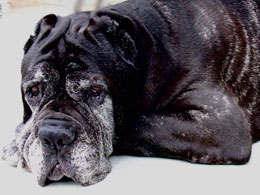
When you receive your pet’s “ashes”, you may be surprised by the appearance. Cremains (CREmated reMAINS) is a better word to use than “ashes”. The word ashes may be misleading due to the fact that the cremains are not factually only a fine grey powder. The only thing remaining after the cremation process (as well as for the Aquamation process) are bone fragments and some organic compounds. There are no "ashes" left from the flesh as the cremation process entirely consumes all tissues except for bones. This is true for pet ashes and (you may be surprised to learn) for people.
You may see different colors in the cremains and this is normal. There are trace minerals and organic compounds found in the bone fragments. Typically, cremains are grayish/white but you may find black, red, yellow and orange pigments. Green "specks" are very common. As a note, Ashes obtained from the Aquamation process are much nicer looking, much whiter and more plentiful.
After the cremation, (and once the cremains dry in the case of Aquamation, as this process being done with water, the bone fragments require a drying phase), the remaining bone fragments are processed (pulverized) in a special machine. The final result should be the consistency that varies from that of gravel (similar to cat litter) to a fine powder, depending on the amount of bone fragments (cremains) left and how much processing is done. Care must be taken not to over-process the bone fragments or they turn into an extremely fine powder/dust that blows away. Therefore you may find unprocessed bone fragments in the urn. It is a balancing act between not leaving large bone fragments and not ending up with too fine a powder.
We find that clients are often surprised at the appearance of the cremains. Unfortunately, the widely used term "ash(es)" is a false description of what we are actually left with. What you are left with are simply pulverised bone fragments ("cremains"). The process is the same for people as is the final product.





